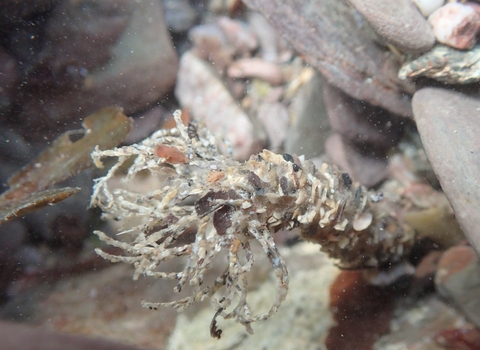Sand mason worm ©Nigel Phillips

Sand mason worm ©Devon WT
Sand mason worm
This worm builds its own home out of bits of shell and sand. It can be spotted on the shore all around the UK.
Sand mason worm ©Nigel Phillips

Sand mason worm ©Devon WT